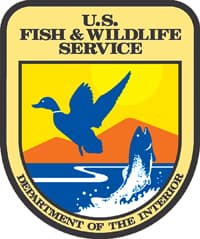Ultralight-led Whooping Cranes Arrive at Wintering Destination in Florida
OutdoorHub 11.27.12

Five endangered whooping cranes arrived Friday on their wintering grounds at St. Marks National Wildlife Refuge (NWR) in Wakulla County, Florida.
These cranes are the 12th group to be guided by ultralight aircraft from central Wisconsin to the Gulf coast of Florida. The Whooping Crane Eastern Partnership (WCEP), an international coalition of public and private organizations, is conducting the reintroduction project in an effort to restore this endangered species to part of its historic range in eastern North America. There are now 115 whooping cranes in the wild in eastern North America thanks to WCEP’s efforts.
“This is the earliest the birds have arrived at St. Marks, and we are thrilled to have them here so soon,” said Terry Peacock, Refuge Manager at St. Marks NWR. “I was in the blind at the pen site to watch the birds arrive. I just have to say that it never gets old watching the birds come to the refuge. It was as touching this time as it was the first time.”
In addition to the five birds led south by WCEP partner Operation Migration’s ultralights, six cranes are making their first southward migration as part of WCEP’s Direct Autumn Release (DAR) program. The DAR cranes were hatched and raised by biologists with project partner International Crane Foundation. The six birds were released in the company of older cranes from whom the young birds learn the migration route south.
Five of the DAR cranes have completed their migration and are located in Hendry County, Florida. The sixth bird is currently located at Jasper-Pulaski Fish and Wildlife Area in Pulaski County, Indiana. The ultralight-led and DAR cranes this year are joining two wild-hatched chicks in the 2012 cohort.
Whooping cranes were on the verge of extinction in the 1940s. Today, there are only about 600 birds in existence, approximately 445 of them in the wild. Aside from the WCEP birds, the only other migratory population of whooping cranes nests at Wood Buffalo National Park in northern Alberta, Canada and winters at Aransas NWR on the Texas Gulf Coast. A non-migratory flock of approximately 20 birds lives year-round in the central Florida Kissimmee region, and an additional 14 non-migratory cranes live in southern Louisiana.
WCEP asks anyone who encounters a whooping crane in the wild to please give them the respect and distance they need. Do not approach birds on foot within 200 yards; remain in your vehicle; do not approach in a vehicle any closer than 100 yards. Also, please remain concealed and do not speak loudly enough that the birds can hear you. Finally, do not trespass on private property in an attempt to view or photograph whooping cranes.
Whooping Crane Eastern Partnership founding members are the International Crane Foundation, Operation Migration, Inc., Wisconsin Department of Natural Resources, U.S. Fish and Wildlife Service, the U.S. Geological Survey’s Patuxent Wildlife Research Center and National Wildlife Health Center, the National Fish and Wildlife Foundation, the Natural Resources Foundation of Wisconsin, and the International Whooping Crane Recovery Team.
Many other flyway states, provinces, private individuals and conservation groups have joined forces with and support WCEP by donating resources, funding and personnel. More than 60 percent of the project’s budget comes from private sources in the form of grants, public donations and corporate sponsors.
To report whooping crane sightings, visit the WCEP whooping crane observation webpage at:
http://www.fws.gov/midwest/whoopingcrane/sightings/sightingform.cfm.

